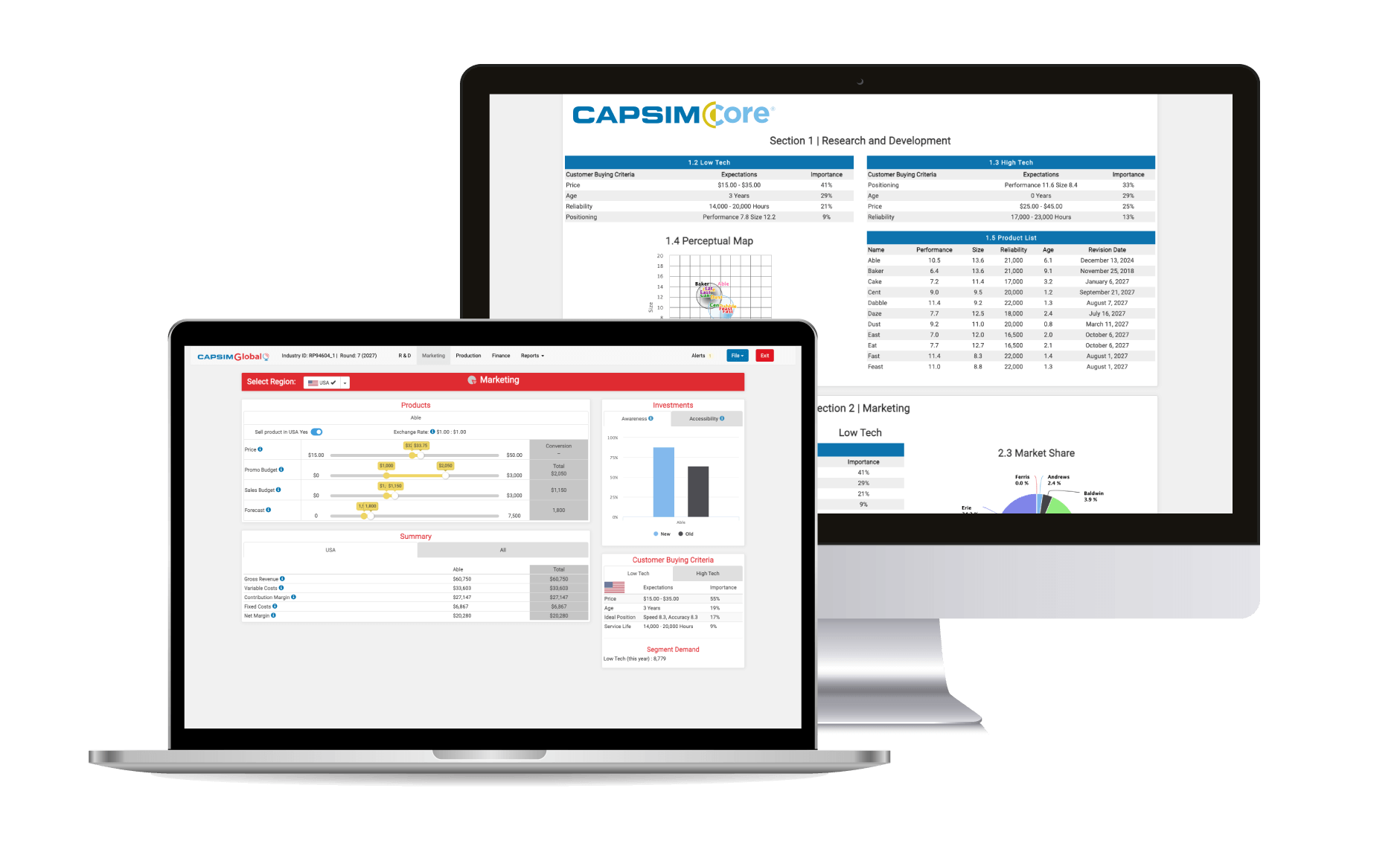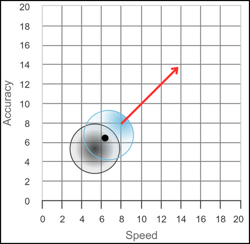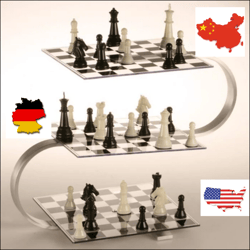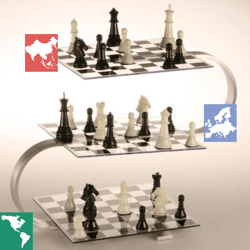
Our Simulations
-
CapsimCore - our backdrop simulation
-
Foundation - basic business acumen
-
CapsimOps - operations focus
-
Capstone - advanced business acumen
-
CapsimGlobal - multinational business
-
GlobalDNA - transnational business
Key Features
- Simulation Teaching Platforms
- Onsite, Online, and Blended
- Academic Courseware
- Corporate Seminars
- Both Hard Skills and Soft Skills
- Extensive Customer Support
- Integrated AI Teaching Assistant
- Minimizes Instructor Workload
- Team-centric Design
- Expandable Complexity
- Assurance of Learning Solutions
About Our Business Simulations
What sets Capsim simulations apart from our competitors? This article describes our simulation design goals, from approaching simulations as an art form to making the instructor's job a focal point.
- Superior design
- Highly evolved
- Serves both corporate and collegiate communities
- Shaped by user feedback
- Easy to teach
What makes business simulations so successful in the classroom? This article explores the theory behind business simulations.
- What are business simulations?
- What are the teaching goals?
- What distinguishes company/industry specific simulations from teaching platforms?
- How do business simulations differ from Inbox simulations?
 How are business simulations delivered?
How are business simulations delivered?
We have delivered tens of thousands of simulations, and we can show you everything you need. This article offers:
- A bird's eye view
- Class and team sizes.
- Support and technical requirements.
- Integrating AI, YouTube, and social media.
- Onsite/Online logistics.
- Corporate Deliveries
- Onsite seminar deliveries.
- Online and blended deliveries.
- Enhancement with Inbox simulations.
- Collegiate Deliveries
- Teaching environments.
- Onsite, online, and blended formats.
- Debriefing and wrap-up.
CapsimCore
 The CapsimCore simulation is our “backdrop” simulation. Activities like adventure retreats, sports, or escape rooms are often used to create a backdrop for purposes like team building or networking. CapsimCore provides an indoor, team oriented, fun competition that can be completed in as little as 4 contact hours or spread out over as many as 16.
The CapsimCore simulation is our “backdrop” simulation. Activities like adventure retreats, sports, or escape rooms are often used to create a backdrop for purposes like team building or networking. CapsimCore provides an indoor, team oriented, fun competition that can be completed in as little as 4 contact hours or spread out over as many as 16.
Business simulations are used in two ways – to teach business acumen, and to create a context where business is the backdrop. Usually they do both, but CapsimCore is specially designed to emphasize the backdrop. On the surface it looks like a richer simulation, and participants still make policy decision that drive the results. However, CapsimCore is forgiving of mistakes, and it leaves out the data and reports that participants would need to dig deep into their company and industry.
Use cases include:
- To teach a behavioral competency. The simulation provides a business backdrop to teach, say, emotional intelligence. Compare with backdrops like sports, escape rooms, or role plays.
- To integrate business with another discipline. For example, to integrate business into an engineering, law, or medicine curriculum.
- To introduce business education. It might be used to kick off an MBA program where students have a degree in something other than business.
- To make distinctions between one functional area and another. In an accounting class, it can demonstrate the importance of accounting to marketing and production.
- To satisfy a networking objective. CapsimCore creates a highly charged, emotional, competitive, fun backdrop that gets people out of “the box” and opens their minds to learning. It might serve as a shared experience in an executive education program, a seminar, or a conference.
Foundation
 The Foundation simulation is our most flexible simulation. It fills the gap between CapsimCore, our "backdrop" simulation, and business acumen simulations like Capstone and CapsimGlobal.
The Foundation simulation is our most flexible simulation. It fills the gap between CapsimCore, our "backdrop" simulation, and business acumen simulations like Capstone and CapsimGlobal.
In the "backdrop" role, sometimes instructors want a simulation that can be used as a context for teaching behavioral competencies, or as a networking vehicle, or as in interdisciplinary framework. When streamlined to its basics, Foundation fills this role while retaining the tools needed to touch on business acumen. Where CapsimCore can be delivered in as little as four hours, a minimalist Foundation can be delivered in as little as a day.
In the "acumen" role, Foundation is less complex than Capstone, but it can be enhanced with add-in modules to meet most of Capstone's learning objectives. Instructors choose Foundation when the agenda is squeezed for time, or they are working with an audience that is still learning business vocabulary. When configured to save time, Foundation can be delivered in 75% of the time Capstone requires. With add-in modules, Foundation takes about the same time as a minimized Capstone.
In the "backdrop" role, Foundation places more emphasis on business principles than CapsimCore. It requires more time. Instructors use Foundation:
- To add a highly charged, emotional, competitive, fun backdrop to the agenda. A simulation gets people out of “the box” and opens their minds to learning.
- To integrate business with another discipline. For example, to impart business knowledge to professionals in engineering, law, or medicine.
- To teach a behavioral competency. The simulation provides a business backdrop to teach, say, emotional intelligence. (Compare with backdrops like sports, escape rooms, or role plays.)
- To satisfy a networking objective. For example, it might serve as a shared experience in an executive education program, a seminar, or a conference.
In the "acumen" role, instructors use Foundation:
- To introduce business education. For example, it might be used as an elective "Intro to Business" course for undergraduates, or it might be used to kick off an MBA program where students have a degree in something other than business.
- To make distinctions between one functional area and another. For example, in an accounting class, it can demonstrate the importance of accounting to marketing and production.
- To serve as pre-work for a comprehensive, assurance-of-learning, accreditation exam prior to graduation. In this role, Foundation refreshes concepts, terms, and skills, and pulls together the entire curriculum for students before they do the exam.
CapsimOps
 CapsimOps is a specialty simulation that shines a spotlight on operations. It is a derivative of the Foundation simulation.
CapsimOps is a specialty simulation that shines a spotlight on operations. It is a derivative of the Foundation simulation.
Building on the Foundation framework, CapsimOps delves deeper into the nuances of operations management. While it matches Capstone in terms of duration, CapsimOps presents a more intricate exploration of operational complexities, surpassing both Foundation and Capstone in this domain. This specialized simulation underscores the pivotal role of operations management in shaping business strategy.
CapsimOps caters to a diverse audience, including corporate trainers, business school educators, and professionals within government and non-profit sectors, who seek a deeper understanding of operations management within business strategy.
In the "Operational Depth" Role, CapsimOps distinguishes itself by:
- Enhancing Operational Understanding: Ideal for creating an immersive learning environment that goes beyond traditional teaching methods, CapsimOps encourages participants to engage deeply with the intricacies of operations management, making learning more dynamic and impactful.
- Cross-Disciplinary Integration: CapsimOps is particularly effective for professionals in fields like engineering, technology, and healthcare, offering them a comprehensive insight into how operations management is integral to overall business strategy, thereby fostering a holistic view of business operations.
- Developing Strategic Thinking: By simulating complex operational scenarios, CapsimOps serves as a platform for developing critical competencies such as strategic planning, decision-making, and problem-solving, crucial for today's fast-paced business environments.
- Building Cohesion and Networking: CapsimOps can act as a touchstone for shared experiences in leadership programs, workshops, or industry conferences, promoting collaboration, networking, and peer learning among participants.
In the "Specialized Learning" Role, CapsimOps is utilized for:
- Advanced Business Training: Suitable for both introductory and advanced levels, CapsimOps can be integrated into specialized courses or modules focusing on operations management, supply chain management, or logistics, providing a practical, hands-on approach to learning.
- Inter-functional Synergy: CapsimOps excels in demonstrating the interconnectedness of various business functions, making it an invaluable tool for courses that aim to illustrate the impact of operational decisions on finance, marketing, human resources, and more.
- Executive Education and Professional Development: For seasoned professionals and executives, CapsimOps offers an opportunity to refine strategic operations management skills, adapt to evolving business landscapes, and drive organizational success through effective operational strategies.
Capstone
 The Capstone Business Simulation remains our top selling simulation, with over 1.7 million students to its credit. Originally designed for exec ed, today it serves two audiences - corporate seminars and the wrap-up courses in degree programs.
The Capstone Business Simulation remains our top selling simulation, with over 1.7 million students to its credit. Originally designed for exec ed, today it serves two audiences - corporate seminars and the wrap-up courses in degree programs.
Capstone pulls together the entire spectrum of business education. To succeed against their competitors, participants must integrate functional strategies into one coherent business strategy. They face challenges ranging from strategic analysis to team development.
Capstone excels at teaching business acumen, both the hard skills and the soft skills.
| Hard Skills | Soft Skills |
|---|---|
| Marketing | |
|
|
| Production | |
|
|
| Finance | |
|
|
| Strategy | |
|
|
CapsimGlobal
 CapsimGlobal builds upon the Foundation/Capstone framework to transition students from a domestic company to a multinational company. It explores all of the fundamental learning objectives of business strategy, then adds issues that companies face when they expand into international markets.
CapsimGlobal builds upon the Foundation/Capstone framework to transition students from a domestic company to a multinational company. It explores all of the fundamental learning objectives of business strategy, then adds issues that companies face when they expand into international markets.
CapsimGlobal serves both the corporate training and academic markets. In executive education, it is used with audiences of domestic managers seeking a better understanding of international issues, ranging from market entry to supply chains. In academic settings, it might cap an international business sequence in an undergraduate program, or distinguish between undergraduate and MBA programs in a wrap-up course.

If you are new to our products, Foundation and Capstone are domestic simulations designed to teach business acumen. Both use a perceptual map that you could compare with a chess board. Foundation and CapsimGlobal place two market segments on the perceptual map. Capstone places five.

Now picture a 3D chess set. Replace the boards with perceptual maps. Deploy a two-segment map on the bottom map. That’s the USA. Above it we have Germany and China. Voila. CapsimGlobal. It is the cubic member of Foundation/Capstone/CapsimGlobal trio.
| Hard Skills | Soft Skills |
|---|---|
| Marketing | |
|
|
| Production | |
|
|
| Finance | |
|
|
| Strategy | |
|
|
GlobalDNA
 GlobalDNA is our executive level simulation. It is aimed at executive education audiences or MBA students nearing the end of their program. Issues extend beyond the CapsimGlobal simulation to include outsourcing, tariffs, regional and product-oriented marketing, and local product design preferences.
GlobalDNA is our executive level simulation. It is aimed at executive education audiences or MBA students nearing the end of their program. Issues extend beyond the CapsimGlobal simulation to include outsourcing, tariffs, regional and product-oriented marketing, and local product design preferences.
GlobalDNA serves both the corporate training and academic markets. In executive education, it is used with audiences of domestic managers seeking a better understanding of international issues, ranging from market entry to supply chains. In academic settings, it might cap an international business sequence in an undergraduate program, or distinguish between undergraduate and MBA programs in a wrap-up course.

Chess uses a 2D board. Capstone and Foundation use perceptual maps. Foundation is simpler - it places two segments on the map while Capstone places five segments. Both are teaching platforms. Most of the aspects of business acumen, ranging from team building to business strategy, can be taught with either simulation. However, they are domestic simulations, not international.

Now picture a 3D chess set. Replace the boards with perceptual maps. Deploy a two-segment map on the bottom map. That’s the domestic playing field, comparable to Foundation and just as complex. Above it we have two international markets, equally complex. In CapsimGlobal, we present a domestic company with the opportunity to evolve into a multinational by entering Germany or China. In GlobalDNA, we expand on that theme by going from a multinational to a transnational corporation with options to regionalize Europe and Asia.
GlobalDNA and CapsimGlobal have similar teaching missions. As an observation, our academic customers choose CapsimGlobal first. It is somewhat simpler - for example, CapsimGlobal does not grapple with outsourcing. Customers choose GlobalDNA when they need a second international simulation in their curriculum (undergraduates use CapsimGlobal, MBA's use GlobalDNA), or when they are working with a senior executive education audience.
| Hard Skills | Soft Skills |
|---|---|
| Marketing | |
|
|
| Production | |
|
|
| Finance | |
|
|
| Strategy | |
|
|
Case Modules
 A Case Module inserts itself into a currently running simulation, often in the later rounds. It stirs the pot by introducing a strategic threat or opportunity, forcing teams to reexamine their strategies. For example, the case might offer an attractive new market, but to address it, the team would have to rethink their policies in the production function.
A Case Module inserts itself into a currently running simulation, often in the later rounds. It stirs the pot by introducing a strategic threat or opportunity, forcing teams to reexamine their strategies. For example, the case might offer an attractive new market, but to address it, the team would have to rethink their policies in the production function.
Case modules are presented as new decisions and reports that are added into the user interface. In some cases they appear on a new display, and in others they are added to an existig display. They act upon the model as force drivers. For example, they might increase or decrease material costs, demand, or R&D cycle time.
A Case Module might not fit into a particular simulation or configuration. For example, within the Foundation universe, some configurations will work with, say, The Internet of Things case module, while other configurations disallow that module. We handle this problem by (1) asking instructors the configuration questions during the setup, then (2) only presenting the case module as an option if it works with the configuration.
Introduction Videos for Participants by Product
CapsimCore
Foundation
CapsimOps
Capstone 1.0
Capstone 2.0
CapsimGlobal
GlobalDNA


